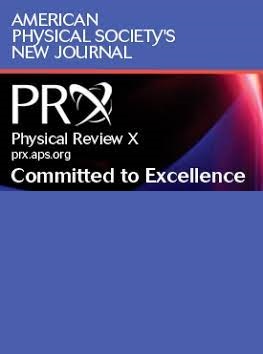空间随机相互作用下的无间隙相中的奇异金属和普朗克输运
IF 15.7
1区 物理与天体物理
Q1 PHYSICS, MULTIDISCIPLINARY
引用次数: 0
摘要
不遵循费米液体理论预测的“奇怪”金属普遍存在于以电子相互作用产生的超导性为特征的材料中。近年来,人们假设电子相互作用的空间随机性一定在奇怪金属中起着至关重要的作用,因为它们的标志线性温度(T)电阻率可以在低温下存活,在低温下声子和umklapp过程无效,正如在实验中观察到的那样。然而,目前还没有一个真实的模型能够清楚地说明这种情况是如何发生的,没有人为的构造,比如大n限制和复制技巧。本文研究了具有空间随机反铁磁相互作用的二维金属在非摄动状态下的真实模型,采用数值精确的高性能、大规模混合蒙特卡罗模拟和淬火空间随机性的精确平均。我们的模拟再现了奇怪金属的线性t电阻率的关键实验特征,具有与耦合常数无关的通用“普朗克”输运散射率Γtr ~ kBT/ h。我们进一步发现,这些系统中的奇异金属丰度与量子临界点无关,相反,它产生于具有无间隙反铁磁波动的物质相,缺乏远程相关性,并跨越参数空间的扩展区域:这一特征也在几个实验中观察到。这些无间隙的反铁磁波动以空间局域化过阻尼模式的形式存在,其存在可以使用最近开发的纳米级磁强计方法来检测。我们的工作为最终微观理解空间无序在决定相关电子材料重要特性中的作用铺平了道路。本文章由计算机程序翻译,如有差异,请以英文原文为准。
Strange Metals and Planckian Transport in a Gapless Phase from Spatially Random Interactions
“Strange” metals that do not follow the predictions of Fermi liquid theory are prevalent in materials that feature superconductivity arising from electron interactions. In recent years, it has been hypothesized that spatial randomness in electron interactions must play a crucial role in strange metals for their hallmark linear-in-temperature (T) resistivity to survive down to low temperatures where phonon and umklapp processes are ineffective, as is observed in experiments. However, a clear picture of how this happens has not yet been provided in a realistic model free from artificial constructions, such as large-N T Γ tr ∼ k B T / ℏ
求助全文
通过发布文献求助,成功后即可免费获取论文全文。
去求助
来源期刊

Physical Review X
PHYSICS, MULTIDISCIPLINARY-
CiteScore
24.60
自引率
1.60%
发文量
197
审稿时长
3 months
期刊介绍:
Physical Review X (PRX) stands as an exclusively online, fully open-access journal, emphasizing innovation, quality, and enduring impact in the scientific content it disseminates. Devoted to showcasing a curated selection of papers from pure, applied, and interdisciplinary physics, PRX aims to feature work with the potential to shape current and future research while leaving a lasting and profound impact in their respective fields. Encompassing the entire spectrum of physics subject areas, PRX places a special focus on groundbreaking interdisciplinary research with broad-reaching influence.
 求助内容:
求助内容: 应助结果提醒方式:
应助结果提醒方式:


